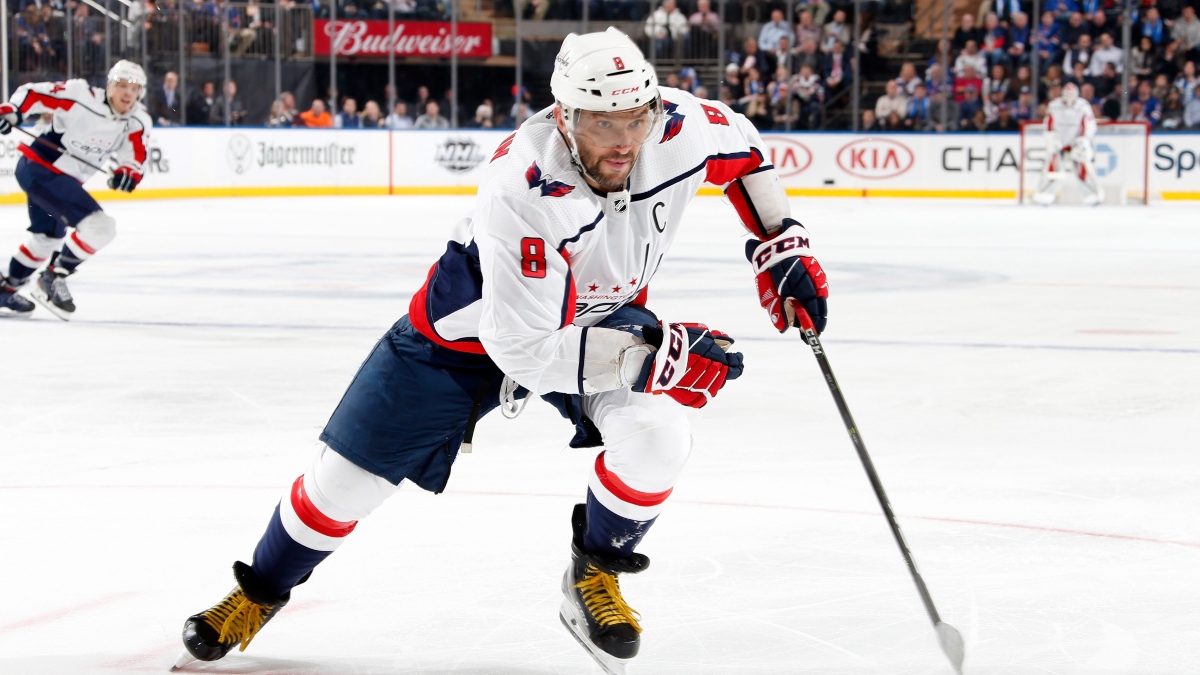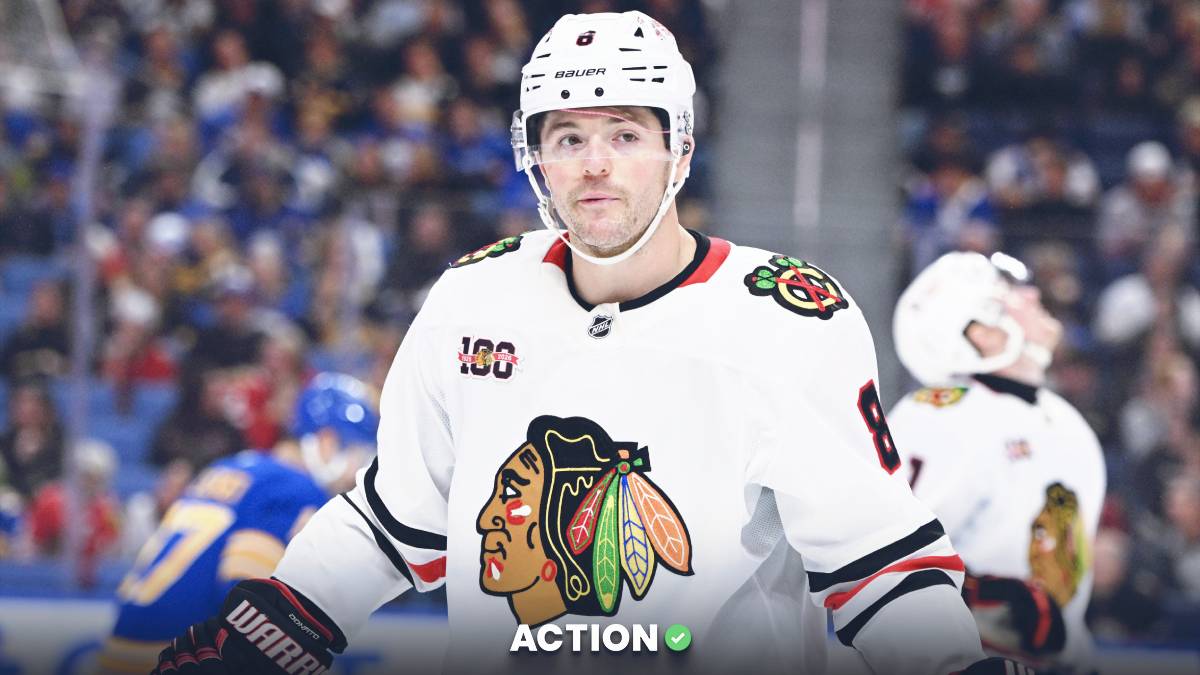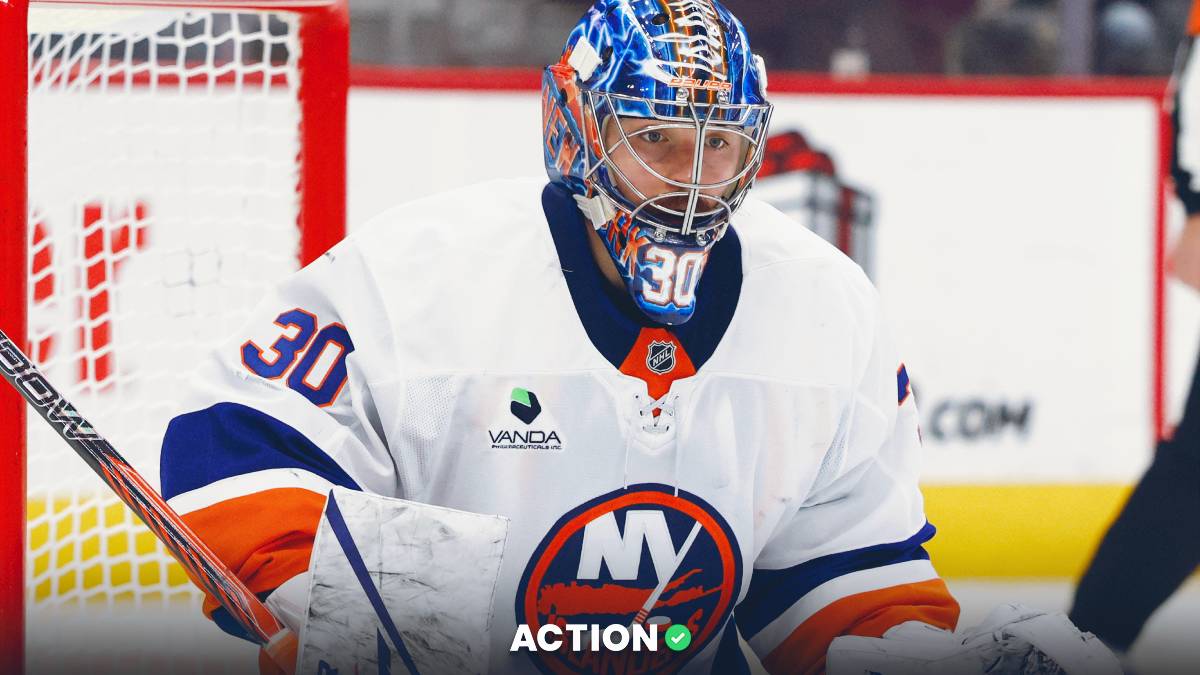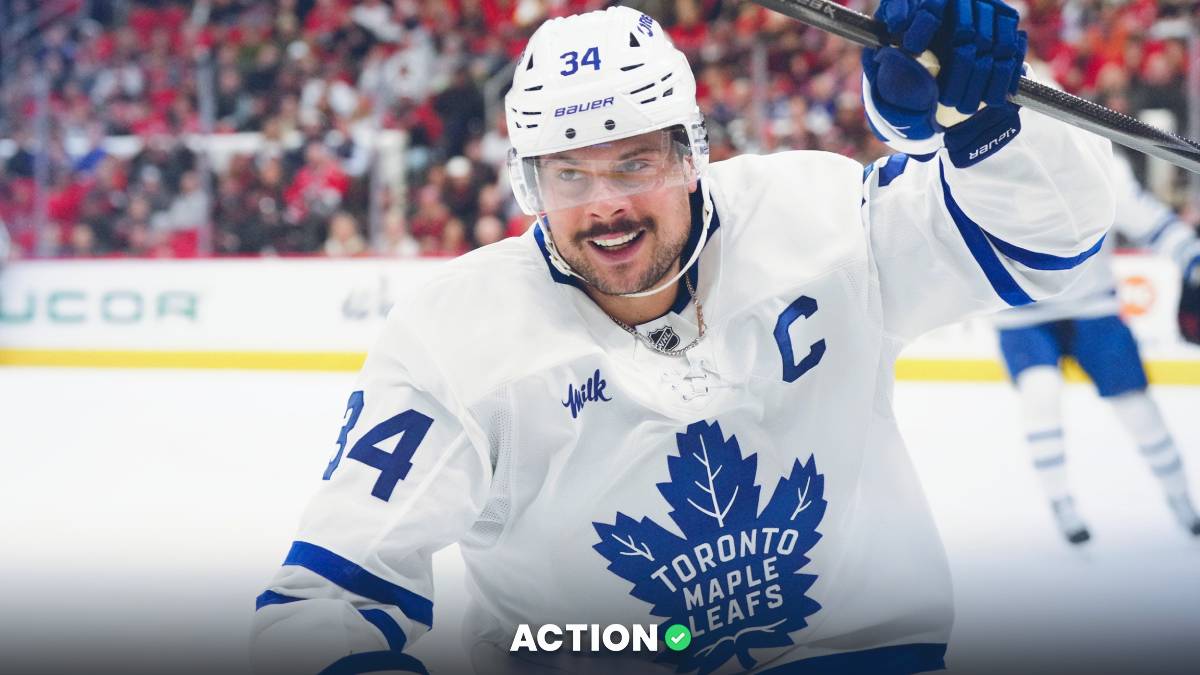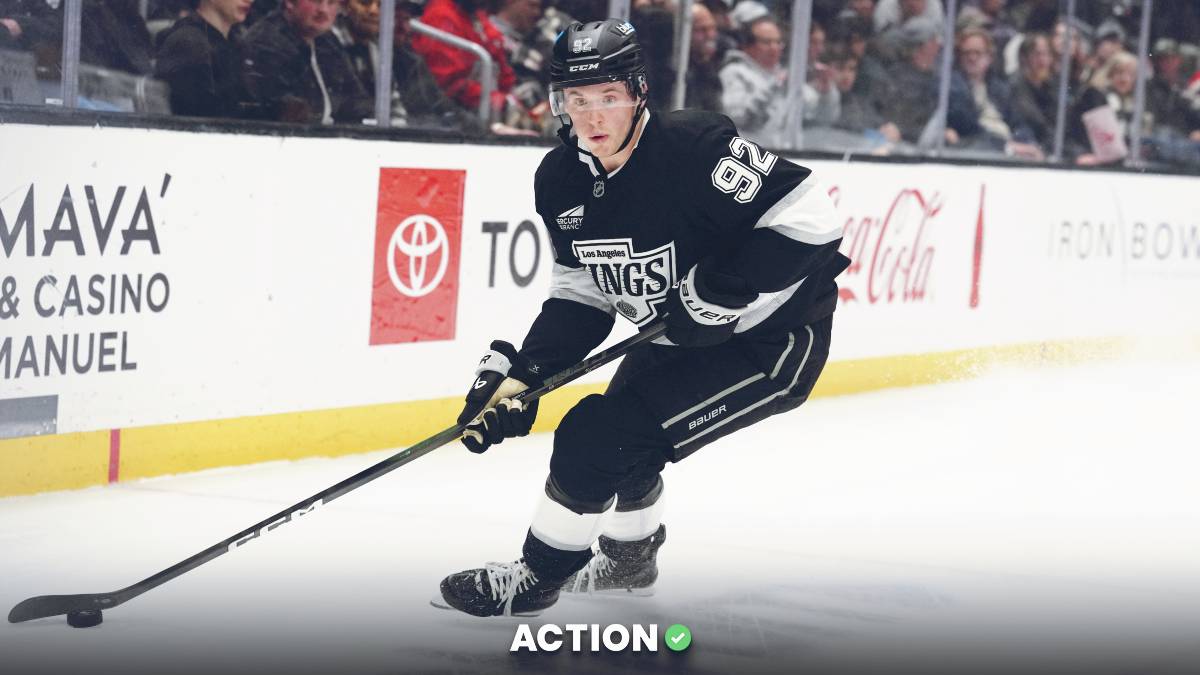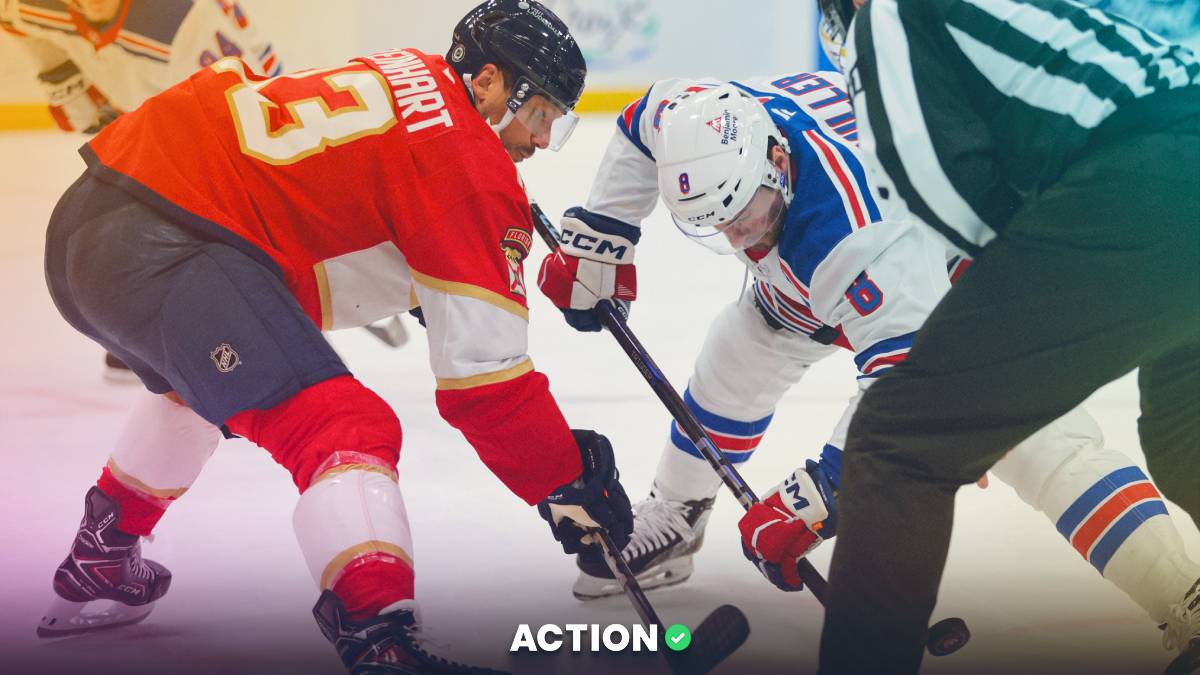- The Capitals got the better of the Bruins on Saturday night in the first game of their mini-series, but Boston was the better team.
- Sam Hitchcock explains why he's backing the Bruins to bounce back on Monday night and provides data to support his pick.
Boston Bruins vs. Washington Capitals Odds
| Bruins Odds | -137 |
| Capitals Odds | +118 |
| Over/Under | 5.5 |
| Time | 7 p.m. ET |
| TV | ESPN+ |
| Odds as of Sunday morning and via DraftKings. Get up to a $1,000 sign-up bonus at DraftKings today. | |
The battle for supremacy in the East Division features familiar powerhouses: the Boston Bruins and Washington Capitals. These two teams have each made the Stanley Cup Final over the past three seasons, and they face off on Monday night in D.C.
On Saturday night, which saw the first meeting of the new season between these two, the Capitals raced ahead to take a commanding 3-0 advantage. Washington surrendered that lead eventually but still eked out a victory in overtime.
A bevy of breadcrumbs from that contest and Washington’s previous eight games this season should make bettors suspicious that the Capitals might sweep the Bruins in their mini-series. But even though Washington hasn't lost in regulation yet yet, I expect Monday will be its first.
I am willing to tolerate the Bruins' price because they have several key factors going in their favor for the rematch.
Boston Bruins
A fascinating point of analysis on the Boston Bruins’ broadcast after Trevor van Riemsdyk’s goal is worth rehashing, mainly because it underlines an important tactical tidbit that will affect Monday’s sequel.
Just before the first TV timeout of the second period, Washington’s Jakub Vrana led an entry into Boston’s offensive zone. He slipped a pass to Nicklas Backstrom, who proceeded to U-turn and sink down into a soft spot in the Bruins’ defensive zone. The seemingly banal puck-carrying of Backstrom had larger implications.
Backstrom had read Boston’s defense and preyed on its hybrid defensive coverage. As Bruins color commentator Andy Brickley explained to viewers, Backstrom identified that once he ferried the puck to the top of the circle, Karson Kuhlman would release off Backstrom so Boston defenseman Kevan Miller would pick him up.
The lag as Boston morphed from man-to-man to zone coverage was exploited to open up a gap for the Capitals’ defensemen. As Washington passed from defenseman to defenseman, weak-side Bruins forward Nick Ritchie was slow to close on van Riemsdyk and — voila! — the puck was in the back of the net.
The Bruins are as good a team as any at making adjustments on second viewing of an opponent. I think Backstrom and the Capitals’ skill players will find less breathing room in this subsequent match.
But while tweaks can be made to Boston’s defensive performance, there were a lot of positives to be found offensively. The Bruins posted a 2.36 expected goals (xG) at 5-on-5, easily exceeding their opponent.
The Bruins also had three more high-danger chances than the Caps, and it wasn’t just the Patrice Bergeron line that found traction. The David Krejci, Kuhlman and Ritchie trio allowed only one shot — the van Riemsdyk goal — the entire game at 5-on-5. Meanwhile, the Bruins’ putative second line engineered 10 shots. The Charlie Coyle line finished with nine.
Scoring chances also came in all stripes — cross-corner dump-ins, rush attacks sparked by Washington turnovers. Boston was the faster team on puck retrievals for many shifts, which led to extended offensive zone time. The Bruins also harnessed the stretch pass through the neutral zone as a way to catch the Capitals unprepared.
Expected goals (also known as xG) is a predictive statistic that gives an indication of whether results are based on sustainable factors like a steady creation of scoring chances, or whether it is down to aspects such as shooting luck or outstanding goaltending.
Simply put, an expected goals rate (xGF%) above 50% is considered good because it means a team is creating the majority of the scoring chances. Anything below 50% is usually a sign that a team is struggling to control play.
xG numbers cited from Evolving Hockey.
Washington Capitals
At some point, maybe Monday, the Capitals’ bubble is going to burst and they will have an ugly loss. Washington ranks first in the NHL in PDO at 5-on-5, thanks in large part to its sky-high 12.44% shooting percentage. Against Boston, multiple long-distance shots above the circles found the twine, including Alexander Ovechkin’s game-winner. Whether that's sustainable for the Capitals is debatable.
For example, Washington is one of the worst five teams in the league in expected goals per 60 minutes and high-danger chances created. To readers pointing out the significance of Ovechkin’s absence due to COVID-19 protocol, I have news for you: The poor offensive numbers also flared up in the first four games.
After Ovechkin played the first four games of the season, the Capitals had the worst expected goals per hour and were seventh worst in high-danger chances. The hazard in not ginning up consistent offensive pressure gets magnified against a team like the Bruins, who have the best expected goals against per hour in the NHL and keep their enemy at bay with an unceasing forecheck and cycle.
One thing to look out for in the second game is how Washington coach Peter Laviolette handles the Brenden Dillon and van Riemsdyk defensive pairing. On Saturday, Dillon and van Riemsdyk had a pitiful 31.30 expected goals percentage and the Bruins generated twice as many shots at 5-on-5 when they were on the ice. Even more concerning for Washington is the lengths its coaches went through to shelter and protect this unsteady defensive pairing.
John Carlson and Zdeno Chara saw the most defensive zone faceoffs and played against Boston’s first line. Although Dillon and van Riemsdyk had the Backstrom line as its primary forwards, they were waxed by Boston’s second and third lines, with the Krejci line wreaking notable havoc. This defensive duo is Chekhov’s gun in this mini-series; you can be sure they will figure in some way in the Second Act.
And the strategic issues don’t end there for Washington. The only 5-on-5 goal the Bruins scored in the first meeting highlights a problem that Washington needs to prepare for.
The Capitals finished the game 45 percent in the faceoff circle, and the Brad Marchand goal was sprung by a set play where Patrice Bergeron set a pick on not one, but two, players! This freed Charlie McAvoy to get a step on Alexander Ovechkin, forcing a communication mistake between Ovechkin and defenseman Jonas Siegenthaler below the circles. If Washington continues to lose more draws than it wins, its defensive coverage response needs to be better.
Goals Saved Above Expectation (GSAx) is an advanced statistic that measures a goaltender's performance against the quality of scoring chances he faced. It is a better catch-all metric compared to save percentage because every SV% counts every saved shot and goal the same, while GSAx weights shots by the quality of the scoring chance.
GSAx numbers cited from Evolving Hockey.
Betting Analysis
The Capitals’ victory from Saturday seems unlikely to be replicated. Boston outplayed Washington but lost due to goaltending and bad puck luck. Ultimately, the Bruins’ elite defense and deep, versatile offense give them the upper hand. Fade the Capitals and play the Bruins’ moneyline at -141. When Washington has its comeuppance, bettors should profit. The time is now.
Pick: Bruins -137


